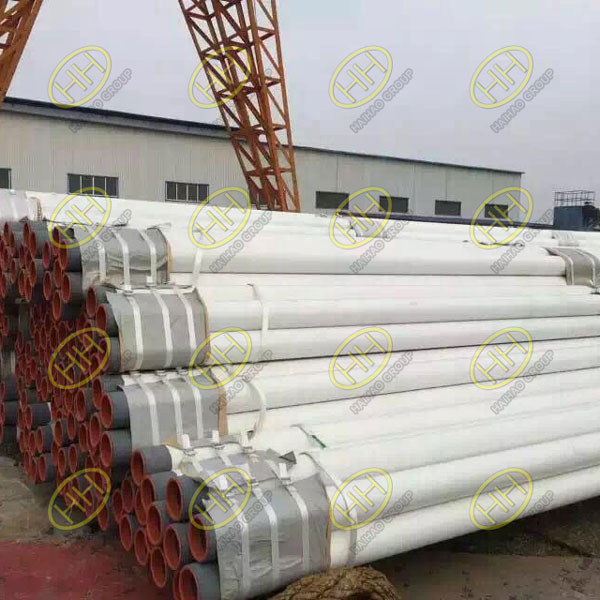Differences between ERW pipes and seamless pipes
In our latest order for a domestic client, Haihao Group produced a variety of pipeline components, including ERW pipes and seamless pipes, tailored to meet the project’s unique requirements. The ERW pipes came with beveled ends (BE), while the seamless pipes featured threaded ends (THD). Understanding the differences between these two types of pipes is crucial for selecting the appropriate option for specific applications.

ASME B36.10 ASTM A53 GR.B BE ERW pipes
1.ERW (Electric Resistance Welded) Pipes
Manufacturing Process: ERW pipes are produced by cold-forming a flat steel strip into a round pipe shape, then welding the edges together using electric resistance. The weld seam is subjected to various tests to ensure strength and reliability.
Characteristics: ERW pipes are generally more cost-effective and are preferred for larger diameter applications. They are widely used in structural projects and non-critical fluid transportation where moderate pressure requirements are present.
End Finish: In this order, the ERW pipes were manufactured with beveled ends (BE). These ends are ideal for welding, providing a secure and leak-proof connection in pressure systems.

API 5L X52 PSL2 seamless pipes wih 3PP coating
Manufacturing Process: Seamless pipes are made by piercing a solid round billet of steel and then rolling or extruding it into a hollow tube. This process eliminates the need for welding, resulting in a pipe without any seam, which is considered more reliable under pressure.
Characteristics: Seamless pipes are ideal for smaller diameter applications and are known for their high pressure and temperature resistance. They are structurally strong and uniform, making them suitable for critical applications, such as oil and gas pipelines and high-pressure fluid transport.
End Finish: The seamless pipes in this order featured threaded ends (THD), allowing them to be easily screwed into compatible fittings. This provides convenience and flexibility in assembly, especially in systems that require frequent disassembly or maintenance.
Key Differences Between ERW and Seamless Pipes
Manufacturing Process: ERW pipes are made by welding, while seamless pipes are formed without seams, enhancing their structural integrity.
Application Suitability: ERW pipes are more suitable for larger diameter pipelines, whereas seamless pipes are preferred for smaller diameter and high-pressure applications.
End Connections: In this order, the ERW pipes featured beveled ends for welding, and the seamless pipes had threaded ends for easy screwing into fittings.
Both ERW and seamless pipes have their specific advantages and applications. By providing both types of pipes with customized end finishes, Haihao Group ensures that the client’s project requirements are met efficiently, delivering high-quality and reliable pipeline solutions.

